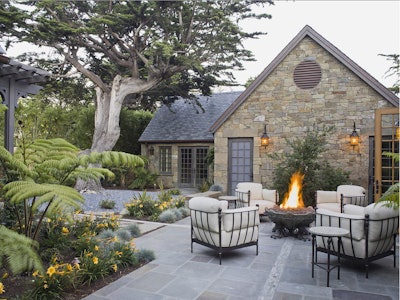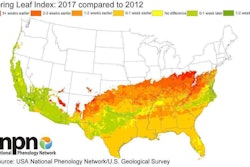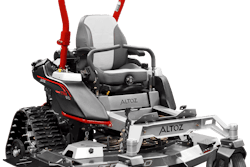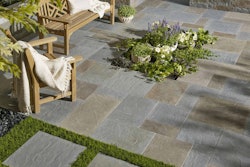 This sustainable residential garden features design elements based on J.R.R. Tolkien’s Middle Earth, including a handcrafted fire pit in a courtyard. Water Calculation and Poetic Interpretation was designed by Arterra Landscape Architects and is a winner of the ASLA 2016 Honor Award, Residential Design Category.
This sustainable residential garden features design elements based on J.R.R. Tolkien’s Middle Earth, including a handcrafted fire pit in a courtyard. Water Calculation and Poetic Interpretation was designed by Arterra Landscape Architects and is a winner of the ASLA 2016 Honor Award, Residential Design Category.Photo: David Livingston
It should come as no surprise that homeowners are accustomed to everyday connectivity, and they expect that technology to be present in their landscapes as well.
The American Society of Landscape Architects (ASLA) has conducted its 2017 Residential Landscape Architecture Trends Survey and for the first time, wireless/internet connectivity entered the top ten project types for consumers.
In February, 817 landscape architects were polled and asked to rate the expected popularity of various outdoor design elements. The top 10 predicted popular projects are below:
Native/adapted drought tolerant plants – 82.31 percent
Native plants – 81.60 percent
Low-maintenance landscapes – 79.25 percent
Food/vegetable gardens (including orchards, vineyards, etc.) – 76.52 percent
Permeable paving – 76.31 percent
Reduced lawn area – 72.66 percent
Fire pits/fireplaces – 71.51 percent
Drip/water-efficient irrigation – 71.05 percent
Wireless/internet connectivity – 70.77 percent
Rainwater/graywater harvesting – 70.32 percent
“The fact that more consumers want outdoor wireless access shows that they want expanded options for remaining connected to their devices,” said Nancy C. Somerville, honorary ASLA member and executive vice president and CEO of ASLA.
Landscape architects are also predicting a major focus on sustainability with native/adapted drought tolerant plants, permeable paving and reduced lawn areas rounding out the top sustainable design elements for this year. The most popular landscape design elements are fire pits/fireplaces, wireless/internet connectivity and lighting.
The forecasted top three outdoor structures are pergolas (50.33 percent), decks (41.35 percent) and fencing (39.82 percent). Meanwhile the favored outdoor recreation amenities for the year will be sports courts such as tennis and bocce (42.38 percent), spa features like saunas and hot tubs (39.68 percent) and swimming pools (39.23 percent).
“Well-designed residential landscapes provide social interaction, enjoyment of nature and physical activity, while also reducing water use and stormwater runoff,” Somerville said. “Landscape architects are pros at creating sustainable outdoor spaces that reflect their clients’ dreams for relaxation and meaningful activity.”









